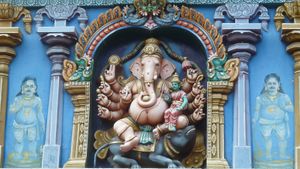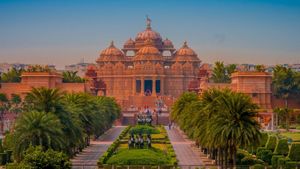India is a country that is known for its rich heritage and culture. We all know how the historical beauty of the monuments and shrines has amazed other countries globally. You also witness innumerable types of temple architecture in India with the most famous ones being the Ganesh temples and Shiva temples.
As a land of temples, our country is popular for the ancient culture, tradition and prestige that it carries along. The Hindu temple architecture is also one of the key reasons why a large number of people visiting them every year, besides the belief of the devotees. The architecture of these temples reflects the tradition and belief systems of historical dynasties and kingdoms, which is always fascinating to see.
Indian temples famous for their impressive architecture
1. Lepakshi Temple, Andhra Pradesh
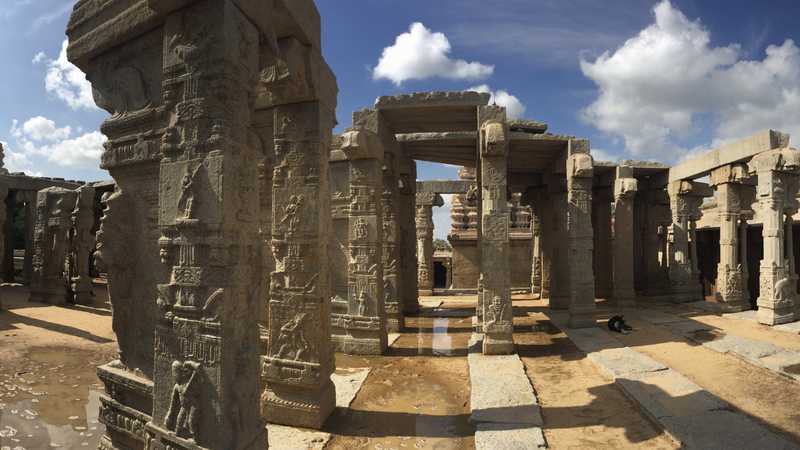
This temple is also popularly known as Veerabhadra Temple. In case you are planning to visit this temple, you can go to Bangalore, from where you can easily visit this architectural marvel. The main attraction of the Lepakshi temple is the stunning epitome of Veerabhadra. It is also very famous for the hanging pillar which is situated at the central hall of the Lepakshi temple. This pillar does not touch the ground, but has still managed to balance the load of the roof of the temple for many centuries.
2. Virupaksha Temple, Karnataka
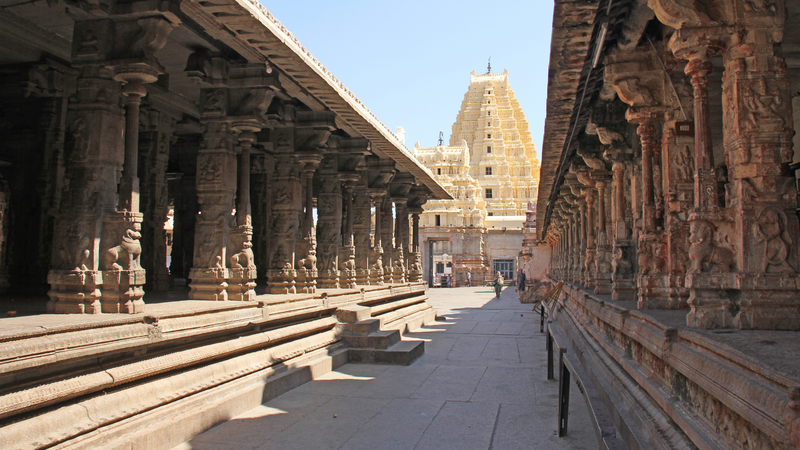
The stunning Virupaksha Temple is located in Hampi, Karnataka, near the Tungabhadra river. It is one of the finest marvels of Indian temple architecture. It signifies the royalty that the architecture of the Vijayanagara empire exudes. This is a Shiva temple as it is a tribute to Lord Shiva and all the sculptures and art carvings in this temple are a dedication to him. This temple is a treat for all Shiva devotees.
It is said that the best of skilled craftsmanship of India is deeply reflected in this temple. The Virupaksha temple is one of the most beautiful temples in India and the ruins of the Hampi Empire are recognised as a World Heritage site by UNESCO.
3. Chennakeshava Temple, Karnataka
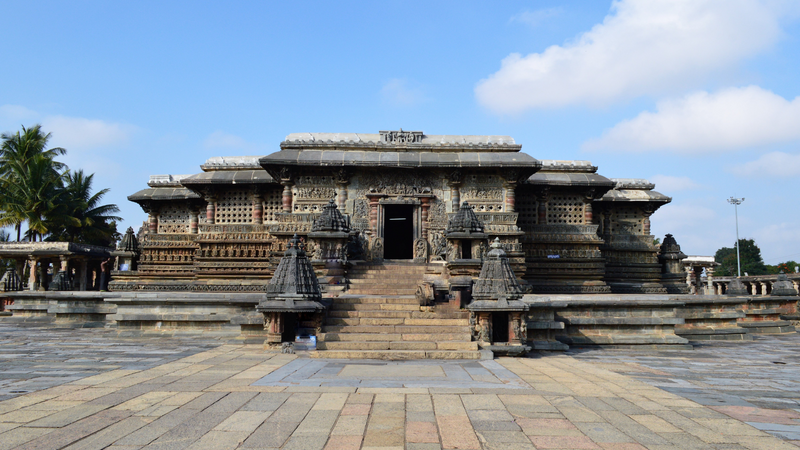
We all know how marvellous the architecture of South Indian temples is and Chennakeshava temple is one shining example. Built in the 12th century AD, it is an example of rich Indian temple architecture. Located on the banks of the Yagachi River in the Hassan region of Karnataka, the Chennakeshava Temple is the main temple in this town. It is also known as the Keshava temple and is dedicated to Lord Krishna and Lord Vishnu. There are various scriptures carved on the walls of this temple with texts from Mahabharata and Ramayana.
4. Kanchi Temple, Tamil Nadu
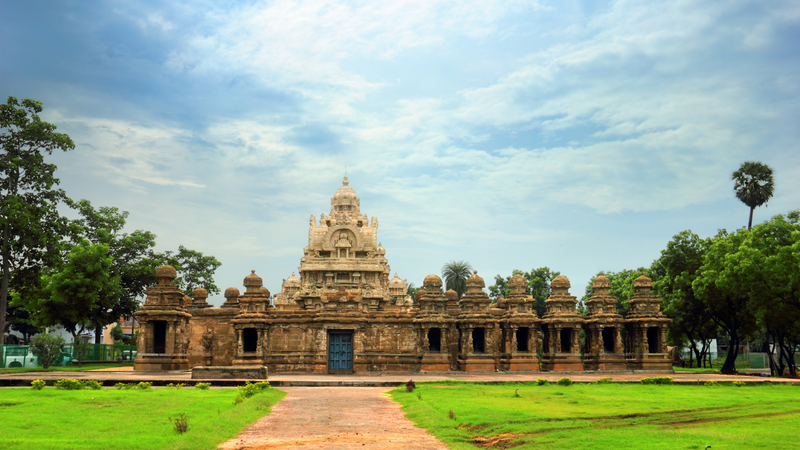
Located in the heart of Kanchipuram is the Kanchi Temple. It is one of the oldest and most beautiful temples in India, spanning over 1600 years. This temple boasts of Pallava art and architecture which is praised all over the world. This temple is a tribute to the mighty powers of Shiva, Vishnu, Lakshmi, and Saraswati.
The Kanchi temple continues to remain one of the popular attractions in Chennai, Tamil Nadu. The temple occupies almost 5 acres of land. When you step inside the temple, you will see beautiful epitomes of Goddess Kamakshi, who is regarded as the ultimate form of Mata Parvati in Hindu mythology. At the centre of enchantment in this temple, there is a statue of Kamakshi surrounded by Lord Shiva, Brahma and Vishnu.
5. Meenakshi Aman Temple, Tamil Nadu
Located on the banks of the Vaigai river, the Madurai Meenakshi Amman Temple, is also popularly known as the Meenakshi Temple. It is not just one of the beautiful temples in Tamil Nadu, but also one of the most beautiful temples in India.
This temple boasts of a Dravidian architectural style and is dedicated to Goddess Parvati and Lord Shiva. Sources say that this temple was built in the 1st century. It is one of the most ancient temples in India, showcasing rich Indian temple architecture. The Meenakshi temple has 14 gateways called as gopurams, that lead to holy shrines of various deities. The structure of the temple has taken inspiration from mandala art, which is based on symmetry and locus.
6. Tanjore Temple, Tamil Nadu
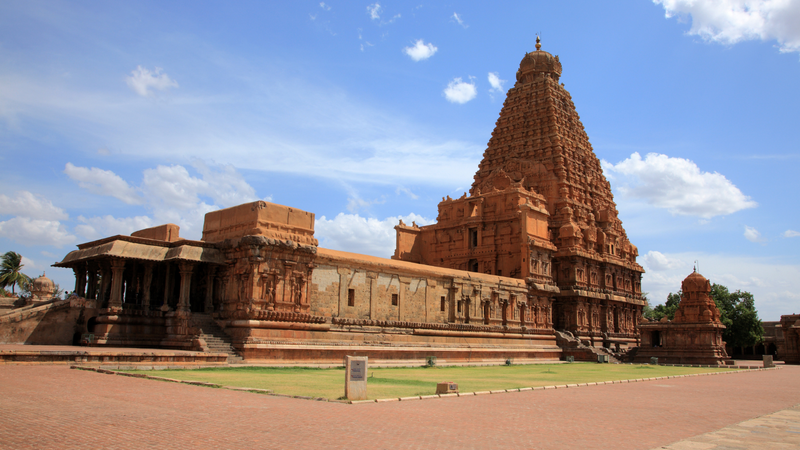
The Tanjore temple is located in the Thanjavur region of Tamil Nadu, and is an example of rich Indian temple architecture. It is the hub of shrines namely Vijayanagar fort, Gangaikonda temple, Thanjavur royal palace and Airavateshwara temple. It was built during the Chola dynasty between 1003 to 1010 AD and hence considered as one of the ancient temples in India spanning over 100 years. Experts say that 1,30,000 tonnes of granite were used for constructing this temple. The Tanjore temple has also been chosen as one of the World Heritage Sites by UNESCO.
7. Halebidu Temple, Karnataka
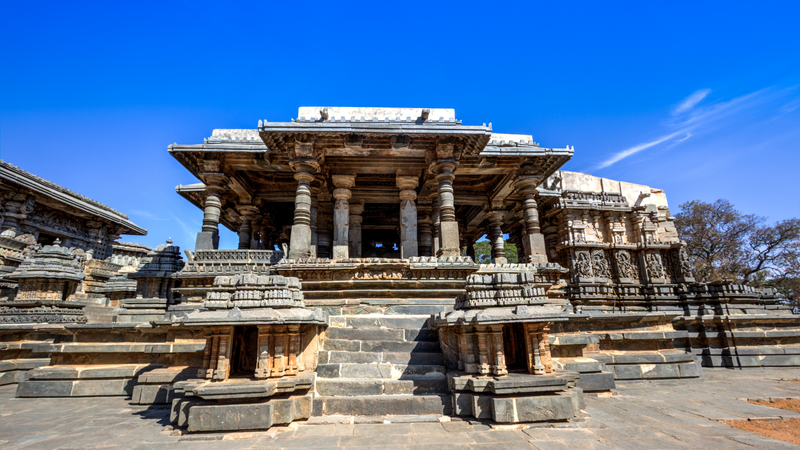
The Halebidu Temple was constructed during the era of the Hoysala dynasty in the 12th century and is dedicated to Lord Shiva. While visiting this temple in Karnataka, you will not only be able to see grand architecture but also learn a lot about the history of the land.
8. Konark Temple, Odisha
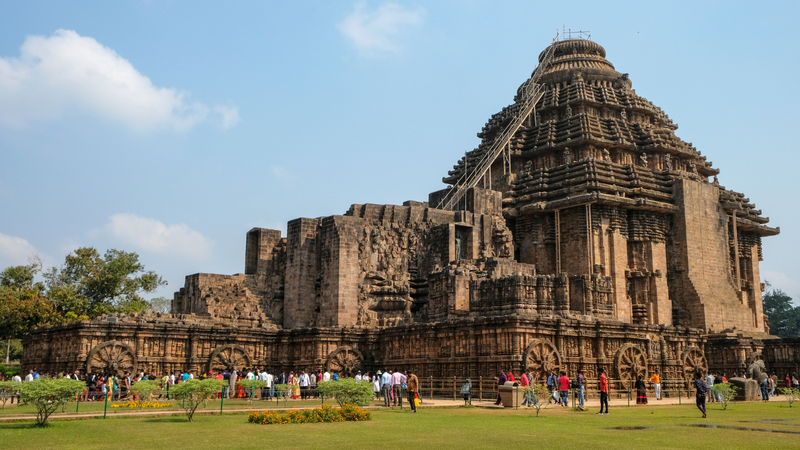
Situated in Odisha, the Konark temple is conceptualised in the shape of a gigantic rath that is carried by seven horses. It is a marvellous example of the Konark symbolising sun and this temple was designed in a way that the first rays of the sun fall on its entrance. It has 24 wheels on its base, and 12 each on the sides. It is a marvellous example of Kalinga architecture.
Disclaimer: The details mentioned throughout this blog are sourced from publicly accessible platforms. At Zeezest, we intend to share factual and verified information. Should there be any inconsistencies or variances in the information provided, please understand that these are entirely unintentional and not meant to mislead.



